The Legends About Gods of Air from Greek Mythology & Their Powers
Greek Mythology is the body of myths told by the ancient Greeks and a genre of Greek folklore. How well do you know about the Greek gods of air?
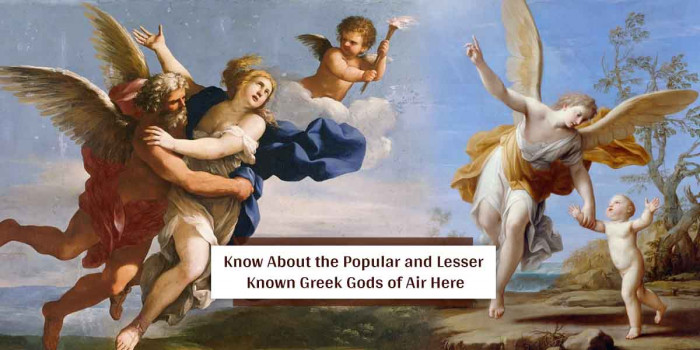
In Greek Mythology, a wind god is a God who controls the wind. Several polytheistic religions have more than one wind god. They might have a separate wind god as an air god.
The main Greek Wind gods were the first four children of the Titans Astraeus and Eos. They were the siblings of Astra Planeta.
The Anemoi were the four wind gods in Greek mythology. Each of them relates to the directions (North East, West, South) from where they come. Let us have a brief of these gods of air and know why they are worshipped.
The Four Anemoi - Boreas, Eurus, Notus, and Zephyrus
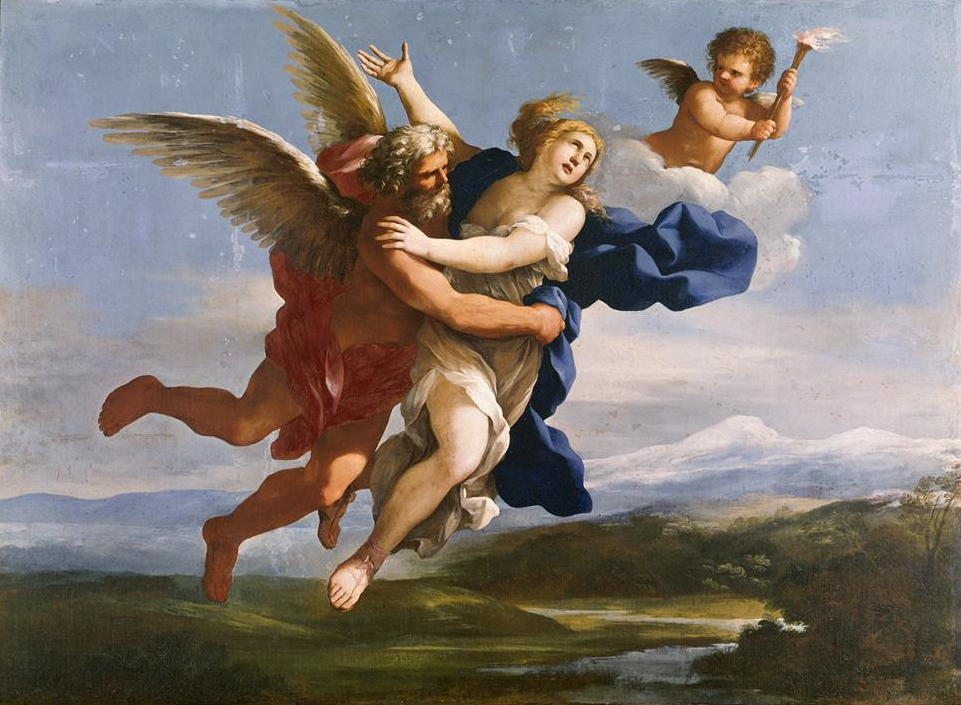
In Greek Mythology, Anemoi were four gods and the offspring of Eos and Aeolus. Eos (Dawn Bringer) was the daughter of Hyperion and Theia or Euryphassa and the sister of Selene. These four gods were associated with different seasons and weather conditions. Sometimes, they were represented as gusts of wind; the other times, they were symbolized as winged men.
They were also depicted as the horses kept in the god Aeolus’ stables, who provided Odysseus with the Anemoi in the Odyssey. You must have read about Anemoi in the ancient Greek stories. In the Odyssey, these horses were linked to harvesting, storms, and farming. The four Anemoi are Boreas, Eurus, Notus, and Zephyrus.
1. Boreas
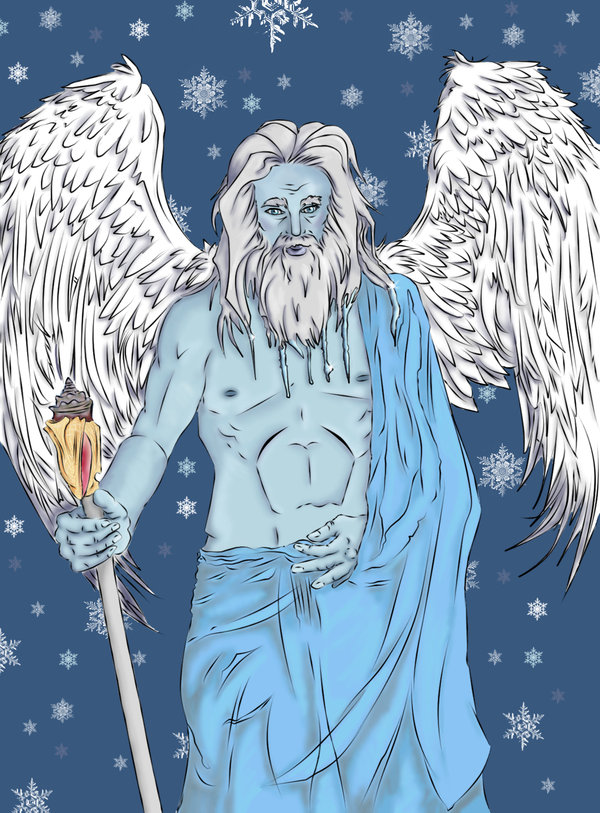
Boreas was a popular purple-winged god of the north wind and bringer of the cold winter air. Although the god is taken as the north wind, the Roman writers Pliny the Elder and Aulus Gellius took this Greek God as the north-east wind. Boreas is represented as the strong god with a violent temper. He was an old winged man with long hair and beard, wearing a billowing cloak.
In the old stories, he would reside in Thrace, the area where the Ancient Greeks regarded as encompassing the lands north of Thessaly. He has two sons Zetes and Calaïs and daughters Chione and Cleopatra. He carried off Orithyia, the daughter of the king of Athens, Erechtheus. The abduction of Orithyia was popular in Athens before and after the Persian war.
2. Eurus
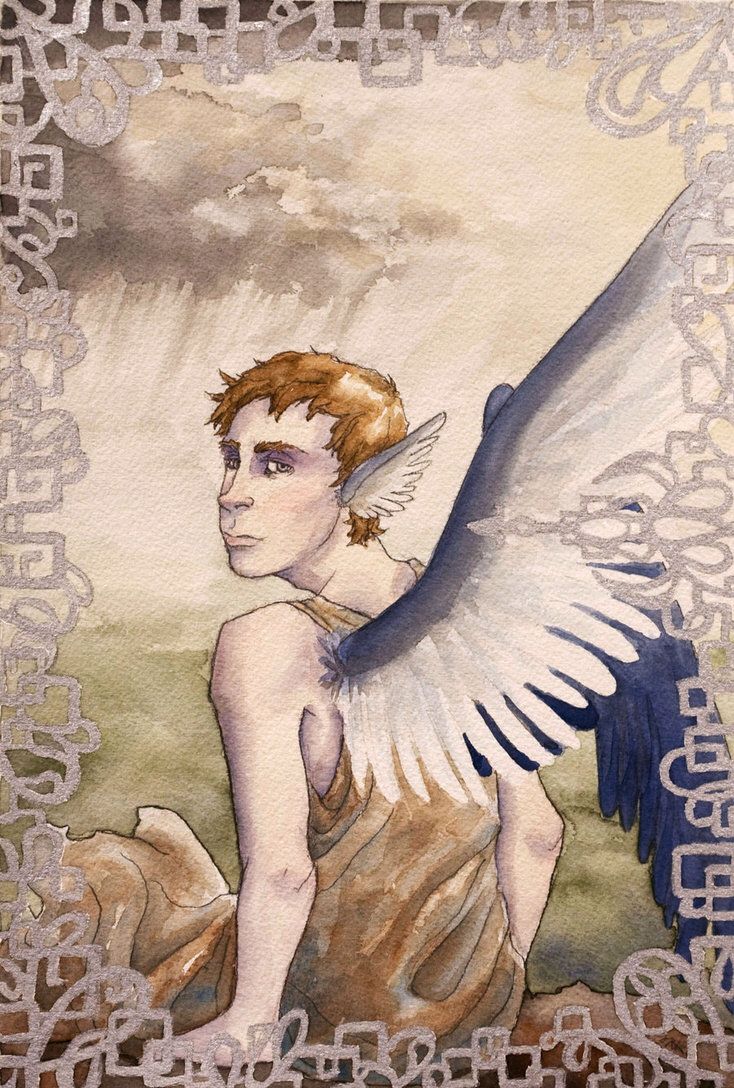
Eurus was not a popular god and was associated with an autumn season and warm weather. He was the brother of the north wind (Boreas), the south wind, and the west wind. His other brothers were Kaikias, Apeliotes, Lips, and Skeiron.
They are represented as men with wings who were clean-shaved. His symbol was water pouring out of an upside-down vase. As a minor god, he is the subordinate of Aeolus, the ruler of Aeolia. On the Tower of the Winds in Athens, Eurus occupies the southeast side while Apeliotes is on the east side. In Roman, Eurus' counterpart is called Vulturnus.
3. Notus
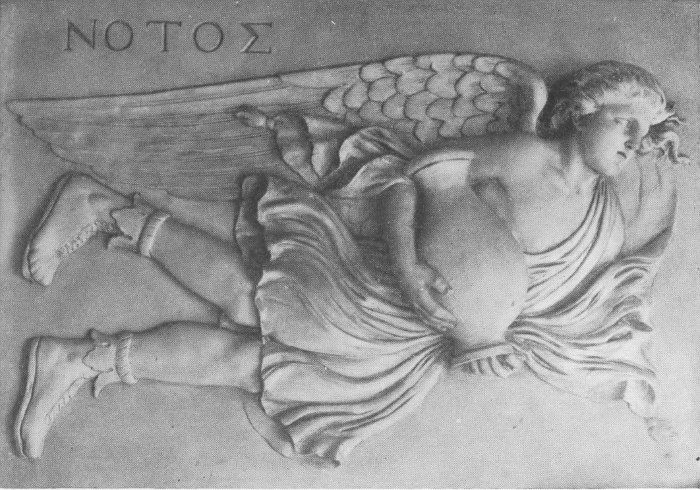
Notus or Notos was the Greek God of the south wind. In ancient Greece, people used to believe that every aspect of their lives was associated with some god. One of the Gods in which they believe was Notus. As the god of South Wind, Notus was said to live in a palace within Ethiopia.
Notus and other Anemoi gods were usually represented in the form of a winged man with the power to fly at the fastest speed. They were also thought to be horses galloping ahead of the winds that followed them. It was also believed that Notus could transform themselves into horses. This belief gave rise to the claim by ancient kings that their horses were sired by one of the Anemoi.
Notus was not considered as beneficial as Boreas because they were associated with stormy winds of late summer and hot temperatures that could ruin the unharvested crops. He occasionally appears in ancient sources in Greek form or as Roman equivalent Auster.
Once, he burnt the crops that belonged to Psyllos of Libya. As revenge, Psyllos listed his brothers and an army to attack him. But when he observed this, Notus attacked the fleet, and there was no man left.
4. Zephyrus
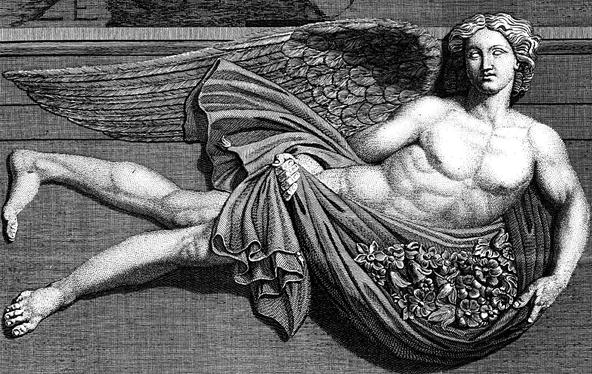
Zephyrus, or sometimes known as Zephyr, is the Greek God of the west wind. He was the husband of Chloris and the father of Karpos.
This Greek God of air is known as the messenger of spring. According to different stories, Zephyrus has many wives. It is said that he was the husband of Iris; he abducted Chloris.
In the story of Cupid and Psyche, Zephyrus served Eros by transporting Psyche to his abode. It was also claimed that he killed one of Apollo’s lovers, Hyacinth. While some sources said that his death was an accident, others said Zephyrus killed him.
Zephyrus is depicted as a youthful and handsome god. The pictures of Zephyrus sports wings on many of the mosaics. In others, he is seen as an amorphous and shapeless wind.
Other Greek Wind Deities That Appeared in Few Ancient Sources
Below listed are a few lesser-known wind deities that appeared in ancient sources like Tower of the Winds in Athens.
1. Kaikias
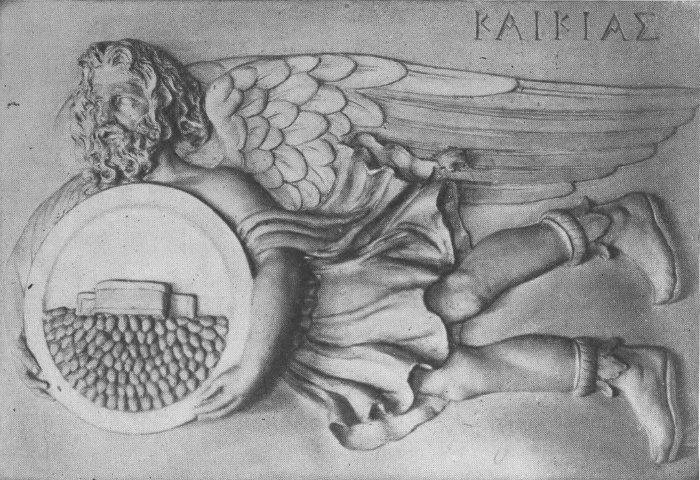
Kaikias is one of the lesser-known wind gods. He ruled the northeast winds. His name comes from the Greek words that translate into evil and badness.
Unlike other gods who are associated with warm weather and the autumn season, Kaikias are represented with violent summer storms. In the picture, he is depicted as a bearded man pouring hailstones from his shield onto helpless mortals.
2. Skeiron
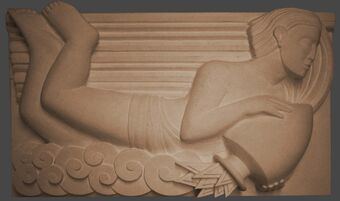
Skeiron or Skiron is the ruler of northwest winds and the son of Poseidon. He forced every man he met on the sea to wash his feet. When they kneeled, he would kick them into the sea, and then they would be eaten by his giant turtle.
His brother brings hail. And Skiron was believed to bring the summer heat and the lightning of the storms. In the picture, he appeared as a bearded man pouring out a cauldron to kill plants and to make them suffer.
3. Apeliotes
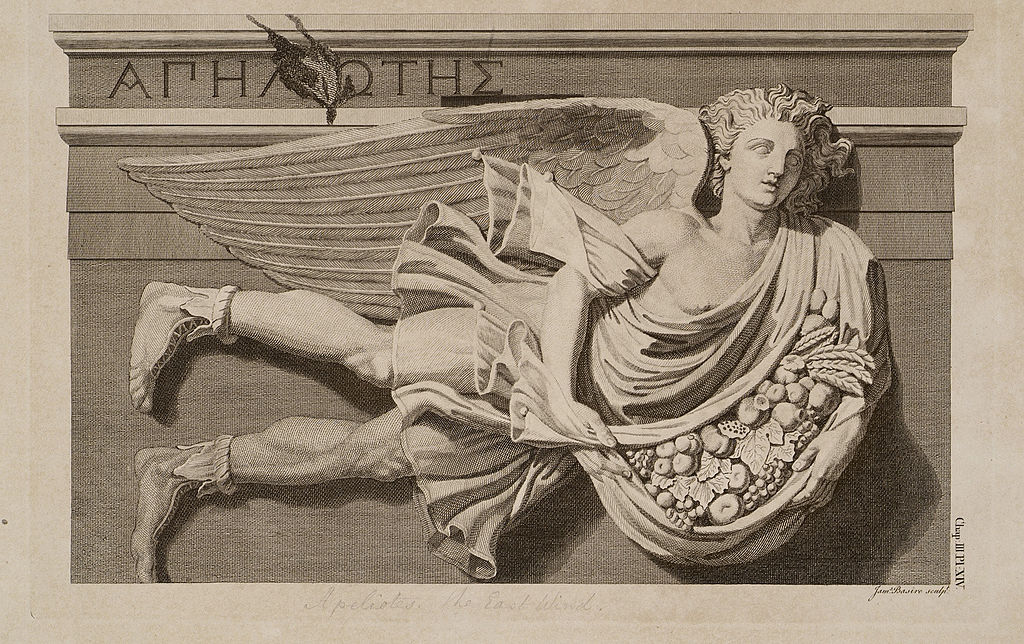
Apeliotes was the lesser-known Greek God of the southeast wind. He differs from Kaikias in several ways. In the picture, he is depicted as a young man wearing a cloak and a light cloth with curly hair and friendly expression.
In his cloak, he could be seen carrying grains, fruits, and flowers as the symbol of the fertility his winds bring. His wind brings the rains of summer to nourish the crops.
4. Lips
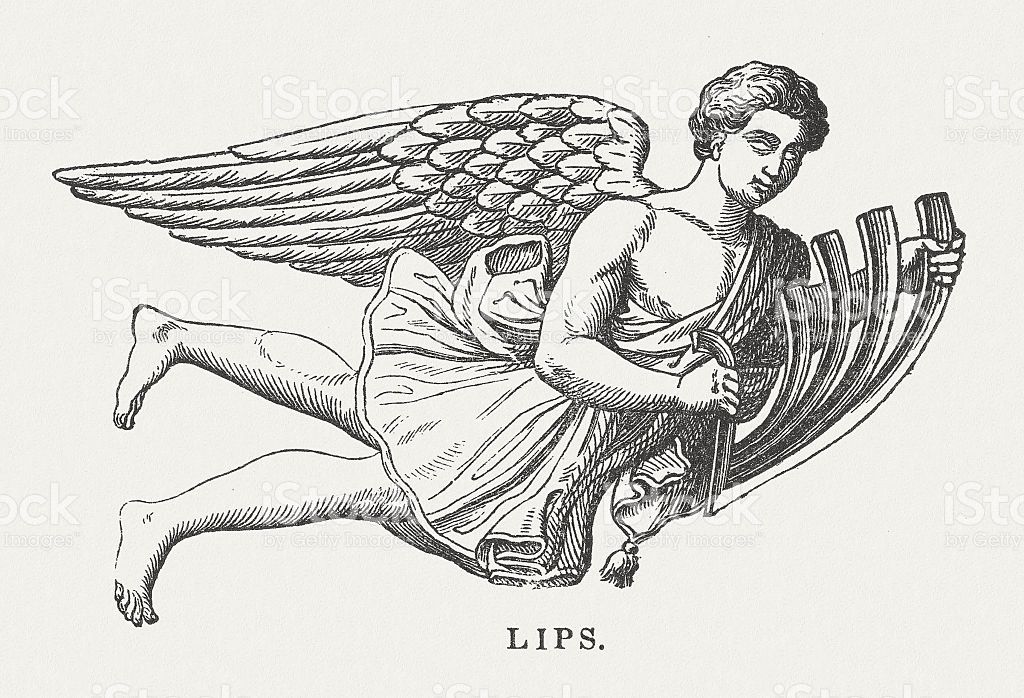
Lips was the Greek God of the south-west wind that displayed an unpredictable character. He is depicted as a winged man holding the stern of the ship.
When he showed kindness, he brought winds for sailing. He was also seen as the destroyer of ships that brought fierce winds to wreck vessels. His association with sailing was represented in several classical artworks.
5. Aura
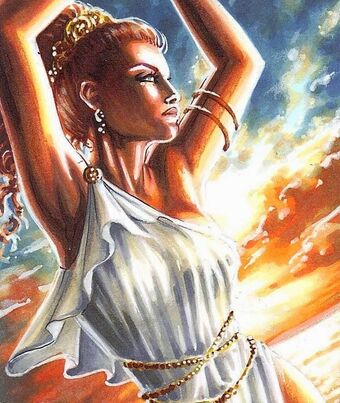
Aura was the Titan-goddess of the breeze, cool air in the morning. She was a virgin huntress and proud of her maidenhood.
She was the daughter of the Titan Lelantos. She has twin sons. One she ate, and the other was taken to Olympus. She compared her body with the Olympian goddess of the Moon and hunt, Artemis. She said that Artemis was too womanly to be a true virgin.
Final Words
If you find Greek mythology interesting, then here are a few famous male Greek gods that you should know about. Other minor wind greek deities included are Aparcitas, Euronotus, Mese, Lapyx, Olympias, Thrascias, Libonotus, and more. Every god has a different energy and is worshipped in different ways. Also, know about water deities from different mythologies here.
The Anemoi are referenced in popular culture. They made appearances in Percy Jackson & the Olympians and The Heroes of Olympus. Do you know anything more about this Greek God of Air? If so, then don’t forget to share it.
Popular Posts
Top 10 Sharpest & Deadliest Swords In History
In classic mythological movies, books and television, we’ve seen those audacious sword-wielding heroes smiting the enemi...
Augustus Perez
List of Water Deities from Different Mythologies
Water deities are the gods and goddesses who had the powers to control the elements of water and ruled over all the fresh and saltwater of the earth. Here’s a list of water deities from different mythologies.
Rishika Gupta
Winged Lion: The Terrifying Mythical Creature In Different Mythologies
A mythological creature, a winged lion dates back to ancient times. This flying lion-like creature has origins in Heraldry, Christianity, Mesopotamian, and Greek mythologies.
Ethan Stephans








